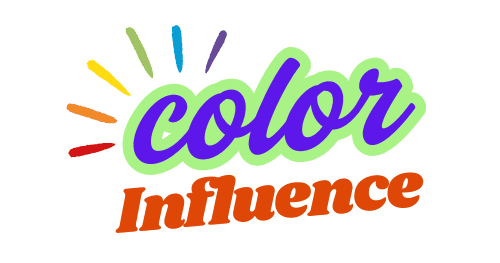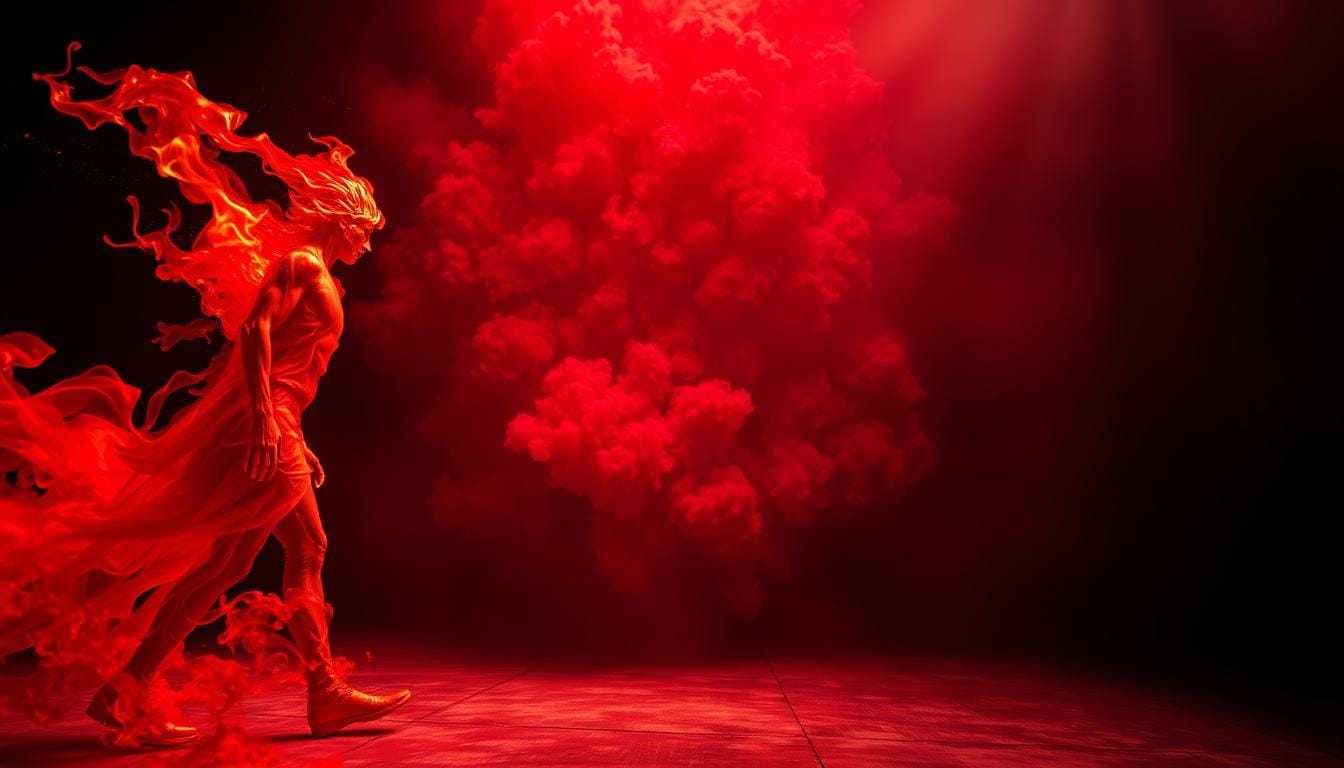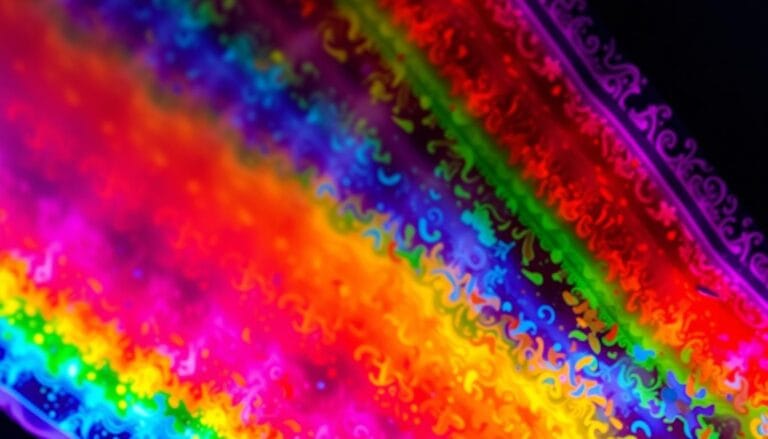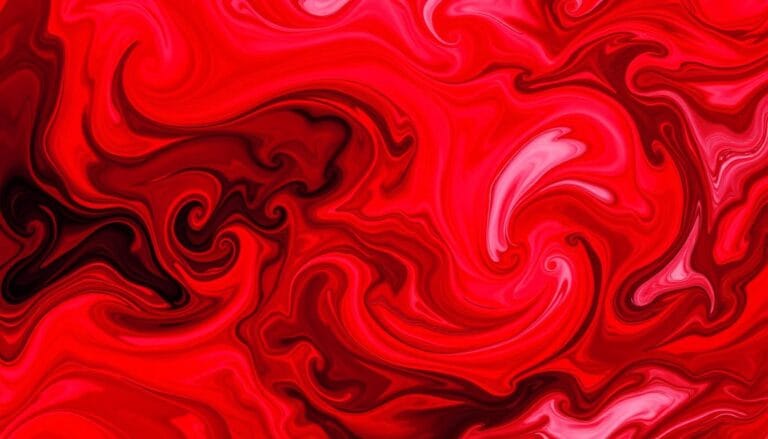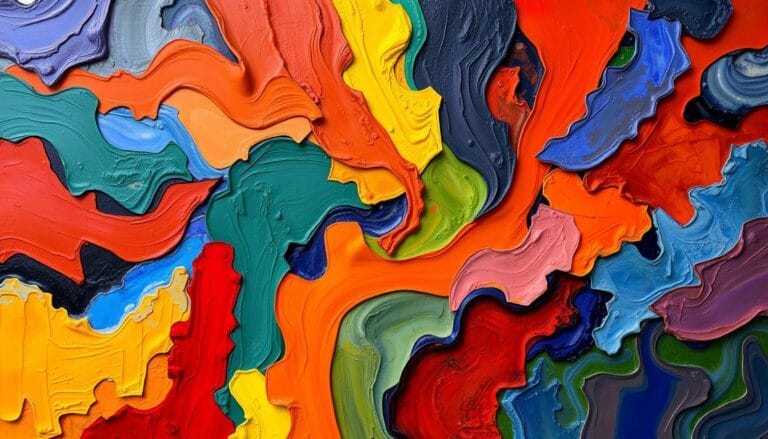From Passion to Power: Understanding the emotional Influence of Red
The emotional influence of red is undeniable, as it evokes strong feelings of passion, energy, and urgency. Whether appearing in nature as a signal of danger or attraction, or being used in marketing, fashion, and art, red instantly captures attention and triggers deep psychological responses. Its intensity can create excitement, stimulate action, and even influence behavior on a subconscious level.
Red is more than a color; it’s a universal language. It grabs our senses from the start. Babies see red first, showing its deep emotional connection.
Red fills our world with meaning. It shows love, passion, excitement, and danger. Studies show red can even change our body’s state, like our heart rate and metabolism.
The Universal Language of Red: Historical Origins and Evolution
Red has been a powerful color for humans since ancient times. Its journey through history shows its deep cultural importance. From cave paintings to ancient rituals, red has always caught our attention.
“Color is a force that has a direct impact on the soul.” – Wassily Kandinsky
The word “red” comes from the Proto-Indo-European root *reudh-. This shows how deeply red is tied to our language and how we see the world.
- First basic color term defined in most languages
- Symbolized power and vitality across cultures
- Used in religious and spiritual ceremonies
Ancient civilizations saw red as very special. In Egypt, it was linked to the sun god Ra’s life-giving power. In China, red meant good luck and wealth. Medieval Christian art used red to show divine sacrifice and martyrdom.
| Culture | Red’s Symbolic Meaning |
|---|---|
| Ancient Egypt | Solar energy, life force |
| China | Luck, protection |
| Medieval Christianity | Divinity, martyrdom |
Red’s impact goes beyond cultures. Studies show it boosts creativity, courage, and strong emotions. Its power to express passion, danger, and energy is universal.
The Science Behind Red’s Psychological Impact
Color Perception and Brain Response
Our brains process red in a unique way. Studies show that red activates the amygdala and hypothalamus. These areas handle emotions and physical reactions. Red’s impact on us is immediate and strong.
- Increase heart rate
- Elevate blood pressure
- Enhance alertness
- Trigger fight-or-flight mechanisms
Physiological Effects on Human Body
Red color theory links red to physical changes. Research has found interesting connections:
- Athletes in red uniforms perform better
- Blood pressure goes up quickly when seeing red
- Being in red environments can speed up metabolism
Scientific Studies on Red’s Influence
Recent studies show red’s deep impact on us. In the 2004 Olympics, athletes in red won 16 out of 21 rounds. This shows red’s effect on performance and perception.
Knowing about red’s science helps us see its big role in our lives. It affects everything from marketing to how we interact with each other.
Red in Cultural Context: Global Perspectives and Meanings
Red’s meaning goes beyond borders, showing a rich mix of cultural views. Learning about red’s global meanings changes how you see it. It opens up a world of different views on this color.
In Western cultures, red is full of strong feelings. It stands for love, passion, and excitement, but also danger and warning. Designers use these feelings to create powerful visuals that grab your attention.
- Western Cultures: Red represents passion and urgency
- Eastern Cultures: Red symbolizes luck and prosperity
- Cultural Variations: Red’s meaning shifts dramatically across regions
Asian cultures see red in a different light. In China, it means good luck, happiness, and celebration. During festivals like Lunar New Year, red is everywhere, bringing hope and joy.
“Color is a power which directly influences the soul” – Wassily Kandinsky
Red’s emotional impact is complex. It’s seen in communist flags and Indian weddings, telling deep cultural stories. It’s more than just a color.
Knowing about red’s cultural meanings is key for global communication and design. It helps you see and use this color in new ways. It’s a powerful tool for connecting with different cultures.
The Emotional Influence of Red: From Love to Warning
Red is a powerful color that deeply affects our emotions and actions. It does more than just look at us; it triggers deep feelings that shape our lives.
Red is a strong messenger of our feelings, stirring up strong emotions in many situations. It shows how deeply red impacts our behavior and thoughts.
Red as a Symbol of Passion and Romance
Red is the color of love and desire. Around the world, it’s linked with deep romance, seen in Valentine’s Day gifts like red roses and heart-shaped items.
- Approximately 70% of emotional associations with red relate to passion
- Red roses symbolize deep romantic connections
- Heart-shaped red items represent intense emotional bonds
Red’s Role in Danger and Alert Signals
Red is also a key warning color. Its bright color grabs our attention, alerting us to dangers and telling us to act fast.
| Context | Red’s Significance |
|---|---|
| Emergency Vehicles | Immediate alert and urgency |
| Stop Signs | Mandatory halt and caution |
| Warning Labels | Potential danger indication |
Power and Dominance Associations
Red goes beyond emotions, showing power and dominance. In work and social scenes, it means authority and confidence.
Wearing red can boost self-confidence by 10-20%. It changes how others see us in business and competition.
- Red uniforms in sports suggest competitive advantage
- Business attire incorporating red signals leadership
- Red accessories can enhance perceived personal power
Red’s emotional power shows its amazing ability to share our deepest feelings. From love to warnings, red is truly unique.
Red in Art and Visual Expression
Artists have always known the power of red. They use it to create stunning visuals. The red color emotion theory shows how this bold color changes stories in art, grabbing our attention and stirring our feelings.
Red’s role in art is seen across many styles, from ancient paintings to today’s art. Early artists used red ochre to share strong emotions and important messages. This shows red’s lasting effect on how we see and feel through art.
“Red is the most powerful color in visual art, capable of transforming emotional landscapes with a single stroke.” – Art Historian Claire Montgomery
- Renaissance masters used red to symbolize passion and divine energy
- Abstract expressionists utilized red to convey raw emotional intensity
- Modern filmmakers employ red to create psychological tension
Red has been used in many ways in art:
| Art Period | Red’s Emotional Significance |
|---|---|
| Renaissance | Wealth, spiritual power |
| Expressionism | Emotional vulnerability |
| Modern Cinema | Psychological tension |
Cinematographers like Quentin Tarantino have used red to add drama to films. In movies like Pulp Fiction, red is more than a color. It tells us about the story’s emotional depth.
Knowing about red’s role in art helps us see how it changes our experience of art. It shows the deep link between color psychology and art.
The Strategic Use of Red in Marketing and Branding
Color is key in shaping what we think, and red is a big player. It connects deeply with our emotions, making it a favorite in marketing.
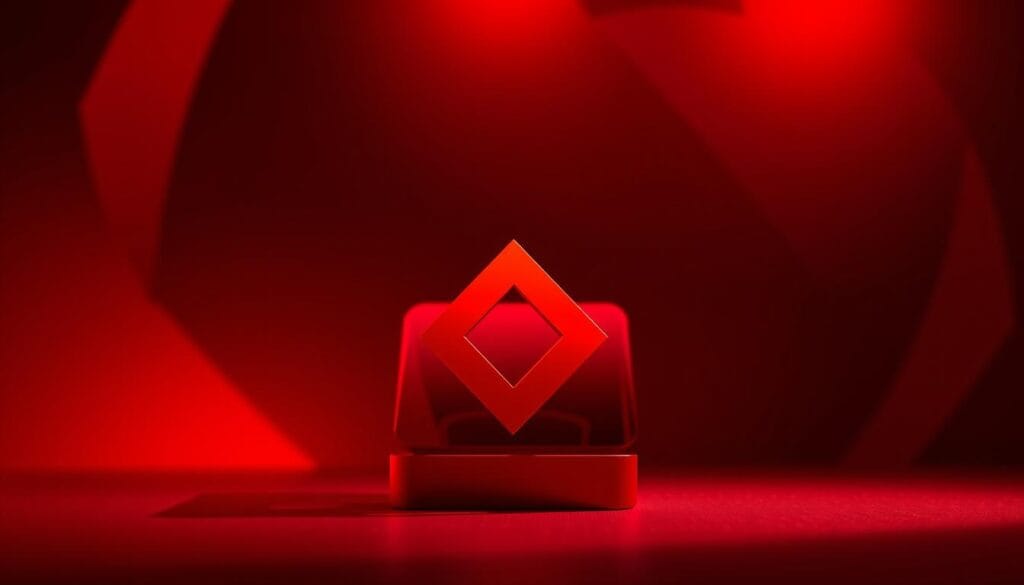
Smart marketers know red can make us react fast. Studies show 90% of what we judge first is color. So, red is a top choice for grabbing attention.
Consumer Behavior and Red
Red changes how we interact with brands in big ways:
- It makes our heart beat faster and feels urgent
- It makes us hungry and excited
- It grabs our attention right away
- It makes us feel passionate and full of energy
Brand Identity and Color Psychology
Big names like Coca-Cola, KFC, and McDonald’s use red to send messages. Each shade of red means something different:
- Scarlet: It’s vibrant and full of enthusiasm
- Bright Red: It’s full of energy
- Crimson: It’s about power and sensuality
- Burgundy: It’s a bit more subtle and sophisticated
Marketing Success Stories Using Red
Red has made some brands famous. Coca-Cola’s red and white is all about joy and energy. Nintendo uses red to show excitement and new ideas.
Knowing how red affects us helps brands create strong visuals. These visuals connect with people, making them more engaged and recognized.
Red in Political Movements and Social Change
Red has become a strong symbol of political resistance and change. It stirs emotions and carries deep meaning in many movements. Red stands for passion, courage, and unity.
Political groups use red to send strong messages of unity. The red flag is especially important, showing the fight for social change.
Notable Revolutionary Movements Embracing Red
- French Revolution: First adoption of the red flag as a symbol of resistance
- Russian Revolution: Bolsheviks embraced red as their defining color
- Cuban Revolution: Red flag representing communist ideals
- Chinese Communist Movement: Red symbolizing socialist transformation
Red’s meaning goes beyond just seeing it. It makes us feel, speeds up our heart, and urges us to act together.
| Political Movement | Red’s Significance | Historical Impact |
|---|---|---|
| Communist Party | Symbol of workers’ struggle | Global revolutionary movements |
| Labor Movements | Representation of solidarity | Workers’ rights campaigns |
| Anti-Colonial Movements | Resistance against oppression | Independence struggles |
Red’s power goes beyond single movements. It’s a universal sign of change. It touches hearts, inspiring many to fight for what’s right.
Practical Applications of Red in Modern Design
Designers use red in many ways, showing its big impact on how we feel and communicate. Red is more than a color; it’s a tool that shows emotion, grabs attention, and changes how we experience things.

Designers use red to tell stories that grab our attention and make us feel certain ways. Knowing how red affects us helps designers make designs that are more meaningful and powerful.
Interior Design and Architecture
In buildings, red makes spaces lively:
- Energizes workplaces
- Makes dining areas cozy
- Points out important parts of the building
Digital Interface Design
Digital designers use red to make things more engaging:
| Design Purpose | Red Application |
|---|---|
| Call-to-Action Buttons | Increase conversion rates by 21% |
| Error/Alert Signals | Instantly communicate critical information |
| User Engagement | Stimulate immediate visual response |
Fashion and Personal Expression
Red lets people show their style, confidence, and passion. It’s more than a color – it’s a statement.
“Red is the color of courage, passion, and unapologetic self-expression.” – Design Innovator
By knowing how red affects us, you can use it in design to make experiences more emotional and memorable.
Conclusion: Harnessing the Power of Red in Contemporary Life
Red is more than just a color; it’s a powerful tool that shapes our experiences. It plays a big role in how we judge things, with up to 90% of our first impressions coming from color. Knowing how red affects us can change how we see design, marketing, and self-expression.
Red is amazing at making us feel strong emotions and reactions. It’s used in branding and personal style to show energy, passion, and a sense of urgency. Research shows red can make us 15% more motivated and 30% more confident, showing its deep impact on us.
Using red well means knowing when and how to use it. Whether designing websites, picking clothes, or making ads, understanding red’s effects can make your message stronger. Companies like Coca-Cola and Netflix use red to create welcoming spaces that connect with people.
Using red in your life can be a powerful way to communicate emotions. It grabs attention, sparks passion, and encourages action. With a better understanding of red’s power, you can use it to make a bigger impact in design and human connection.
FAQ
Why does the color red have such a strong emotional impact?
Red is a color that really gets our emotions going. It makes our heart beat faster and makes us more alert. It can make us feel excited or warn us of danger.
How does red influence human behavior in different cultures?
In different places, red means different things. In China, it’s about good luck and wealth. In the West, it’s about passion or danger. This shows how complex and varied red’s meaning can be.
Can red actually affect physical responses in the human body?
Yes, studies show red can change our body’s response. It can make our heart race, blood pressure go up, and adrenaline spike. These changes help explain why red grabs our attention so well.
How do marketers use the emotional influence of red?
Marketers use red to make us act fast, feel hungry, or notice them more. Companies like Coca-Cola and Netflix use it to get us excited and engaged. They know red’s power to influence us.
What makes red such a significant color in art and design?
Red is a strong tool in art and design. It can show strong feelings, draw attention, and carry deep meanings. Artists and designers use it to add passion and depth to their work.
Is the emotional impact of red universal or culturally specific?
Red’s effects are somewhat universal, but its meaning varies by culture. Some feelings, like being more alert, are common everywhere. But specific meanings change based on where you are and what you believe.
How does red influence decision-making and perception?
Red can affect how we think and decide. It can make us more focused, competitive, and quick to make choices. Its power to make things seem urgent is why it’s used so much in design and communication.
Can wearing or surrounding yourself with red affect your mood?
Yes, being around red can change how you feel. It can make you feel more confident and energetic. But too much red can make you feel overwhelmed or even angry, depending on you and the situation.
Why is red often associated with danger and warning signals?
Red is great for warning signs because it grabs our attention fast. It’s connected to our body’s alertness, helping us quickly notice and react to threats or important info.
How does red play a role in political and social movements?
Red has long stood for change, unity, and action. It’s been used in movements for communism, workers’ rights, and more. It represents passion, resistance, and the power of coming together.
